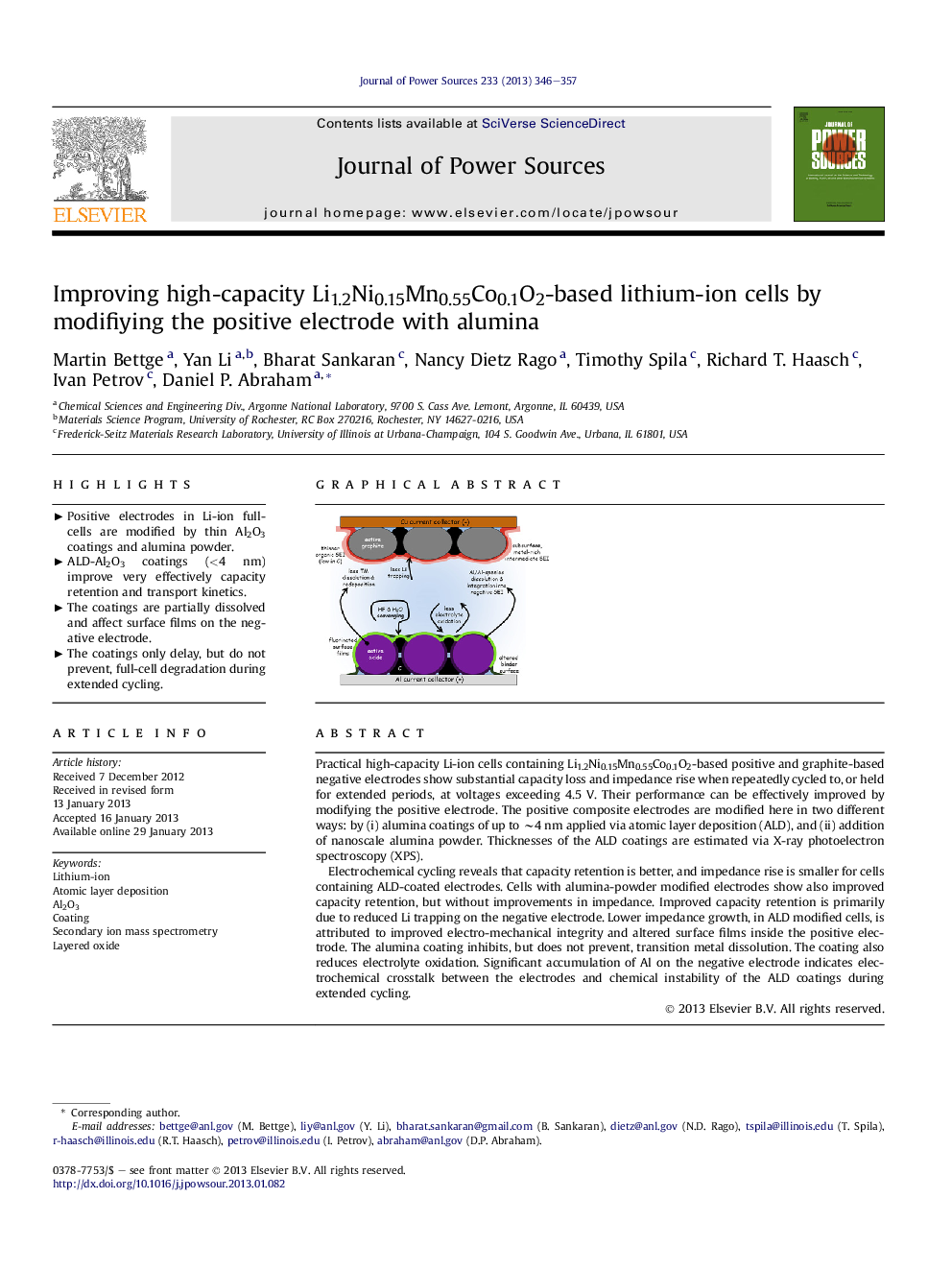| Article ID | Journal | Published Year | Pages | File Type |
|---|---|---|---|---|
| 1292991 | Journal of Power Sources | 2013 | 12 Pages |
Practical high-capacity Li-ion cells containing Li1.2Ni0.15Mn0.55Co0.1O2-based positive and graphite-based negative electrodes show substantial capacity loss and impedance rise when repeatedly cycled to, or held for extended periods, at voltages exceeding 4.5 V. Their performance can be effectively improved by modifying the positive electrode. The positive composite electrodes are modified here in two different ways: by (i) alumina coatings of up to ∼4 nm applied via atomic layer deposition (ALD), and (ii) addition of nanoscale alumina powder. Thicknesses of the ALD coatings are estimated via X-ray photoelectron spectroscopy (XPS).Electrochemical cycling reveals that capacity retention is better, and impedance rise is smaller for cells containing ALD-coated electrodes. Cells with alumina-powder modified electrodes show also improved capacity retention, but without improvements in impedance. Improved capacity retention is primarily due to reduced Li trapping on the negative electrode. Lower impedance growth, in ALD modified cells, is attributed to improved electro-mechanical integrity and altered surface films inside the positive electrode. The alumina coating inhibits, but does not prevent, transition metal dissolution. The coating also reduces electrolyte oxidation. Significant accumulation of Al on the negative electrode indicates electrochemical crosstalk between the electrodes and chemical instability of the ALD coatings during extended cycling.
Graphical abstractFigure optionsDownload full-size imageDownload as PowerPoint slideHighlights► Positive electrodes in Li-ion full-cells are modified by thin Al2O3 coatings and alumina powder. ► ALD-Al2O3 coatings (<4 nm) improve very effectively capacity retention and transport kinetics. ► The coatings are partially dissolved and affect surface films on the negative electrode. ► The coatings only delay, but do not prevent, full-cell degradation during extended cycling.
